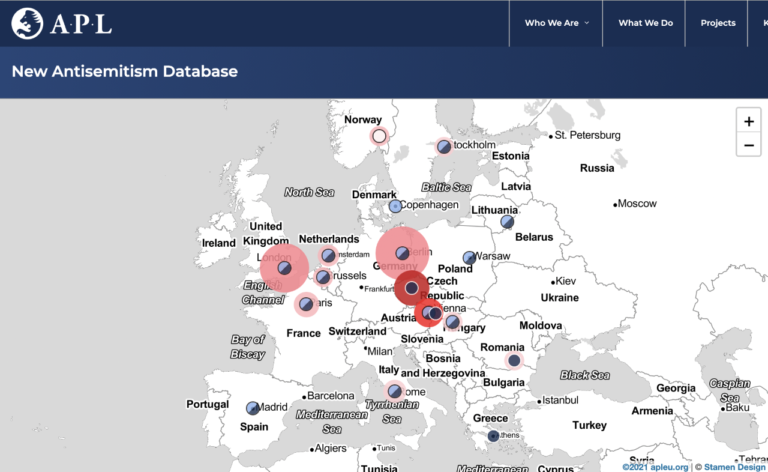Arguing with people holding extremist views is difficult – emotionally, mentally, and sometimes intellectually as well. Extremist subcultures have actually established a seemingly coherent narrative and worldview in which, when required, even facts are swept aside by the arguments that prop up and validate each other. These cannot be shaken merely through rational counter argument. Usually, the responses to counter arguments are ready and waiting within a narrative – so simple refutations including statistical data, points of law or quotations which would have us think we have won the argument are in fact of limited affect.
Here are 4 effective reasoning techniques you can use for reacting to antisemitic or xenophobic arguments.
I. The cognitive asserter – Data & facts
This profile utilizes reasoned arguments, data, and numbers that are available and confirmed, and it focuses on spotlighting and correcting the logical or factual mistakes made in the opposing point of view. It does not react to personal attacks (or only to say that personal attacks will not be responded to), but swoops down on any mistake, to refute it. The goal is to make the opponent run out of arguments, repeat themselves, give some highly emotional response (“that’s just how it is!”), or simply fall silent.)
In a research we have conducted on the effectiveness of reasoning techniques, the most successful commenting done by the cognitive asserter was related to an article on the Academy Award received by the Hungarian film Son of Saul, which depicted the tragedy of the Holocaust. There were lots of comments under the article, including a string of Holocaust denials. Among the commenters one could find some who were deeply involved in the subject, and well read in the literature of antisemitism and Holocaust denial. The tester “stayed in character” throughout, and countered the antisemitic commenters on well prepared and purely rational grounds. Though they could not be dissuaded, since their points of reference were either fake or easily refuted, it was possible to make it quite clear for the other commenters that in spite of appearances, their arguments had no scientific base.
II. The cognitive questioner – Don’t you think that…?
The profile is characterized by an intellectual, and intellectualizing line of argument, which employs questions (“don’t you think that…?”) to drive the extremists into self-contradiction. The profile’s arguments are supported by data, numbers, facts and research results.
The most successful commenting done by the cognitive questioner was on the subject of refugee. The tester raised vital questions here, eliciting many responses, and unfolding a particularly active, animated debate for an online space. For example, the tester posted the following question: “Surely you are not thinking that I would contest defending borders or support unchecked migration?” Responses carried on in a mostly rational vein, it did however become clear that the commenters involved in this could not be dissuaded either.
III. Emotional asserter – Personal feelings, experiences & convictions
This profile tries to have an impact primarily by expressing its own feelings, experiences, and convictions. Personal examples are brought up in argument and an effort is made to present a positive role model. The profile invokes fundamental values that are hard to undermine. Its primary goal is to prompt those who sympathize and agree with them into speaking out, and if possible, creating a sane majority in the given thread.)
In one of the successful comment streams resulting in many comment responses the commenters lost their tempers completely, swearing profusely. The tester triggered impetuous emotional responses a number of times while commenting. For example, one commenter reacted as follows: “That’s enough of you”. Another: “Why don’t you stop embarrassing yourself!” It must be noted here as well, that there was no sign that commenters were won over by the arguments, but good conversations came out of it, and convincing arguments were produced which, seen from perspective of an external observer, shows that the tester’s message is a real alternative to the angry and aggressive opponents.
IV. Emotional questioner – Igniting emotions with questions
This profile appeals to feelings and aims to affect them. Similarly to the emotional asserter technique, its primary goal is to win others over through them, and to plant skepticism. But this profile mainly operates with questions (and with the occasional use of irony) to convey its message and not arguments or personal stories.
During the research, the profile was able to make some results in a comment thread under an article about the refugee crisis. In the course of one of the discussions, the question of the case of Cologne came up. A commenter who did not agree with the tester first joined the argument and took a highly aggressive tone. After the tester took exception – to the tone, not the content – (“Why are you being offensive? Why is it wrong if someone is assisted by a sign in their own language?”), the commenter who had been hostile until then apologized, and admitted that a civil “defense of the opposite side” ought to be possible (“I did not mean to be “offensive”, especially if someone is representing the opposite point of view and aims to put this forward in a civil manner. That is fine. I have already made my point otherwise.”). We only experienced this sort of recognition with this profile.








